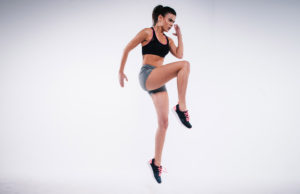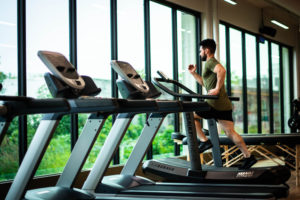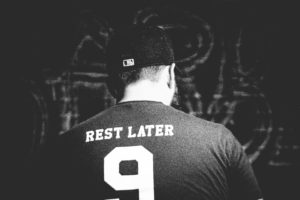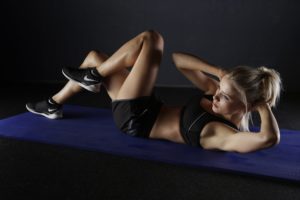
The HIIT Workout: Benefits & Risks
While HIIT certainly does have its benefits, it’s not a perfect solution for everyone, and there is a risk that it can do more harm to your body than good.
Home » Fitness Blog » How to get rock hard abs using science
Gone are the days where ab crunches will help you get rock hard abs!
One of the things I find myself explaining to clients when it comes to core work is that it hasn’t got to be painful and it doesn’t need to make you sore the next day to be effective. This is true of any region of the body to be fair, but it’s especially true of core muscles. To make a muscle really hurt and feel sore the next day you need to have done small, isolation movements, taken to the point of failure and then doing multiple exercises on that muscle to create soreness.
As discussed in my previous post, why you should be doing anti-tension core training, core muscles are anything that attaches to the trunk. Now that is a lot of muscles, so if you’re going to spend your time isolating each muscle you are wasting a lot of time. We all want the biggest bang for our buck from training and for this we have to forget the notion that if it’s not burning it’s not working.
My last post discussed whether or not you need to do direct core training to get abs in the traditional manner. There has certainly been a shift within the industry where core training is starting to be understood more and creating a strong base to be athletic and hold good posture and alignment is key. One aspect of training that naturally challenges this alignment and posture is single limb training.
When you are working on one arm or leg at a time there will be a desire to lean towards or away from the load to help “cheat” the exercises. Maintaining alignment during a single limb exercise means you’re battling the forces working against the body and therefore resisting a movement. I’m a big fan of having single limb training, especially heavy loaded single limb training as part of all training plans as this will drastically reduce the need to do direct core work. I mentioned in my anti-tension core training blog that there are three planes of motion to resist movement from:
A lot of single limb exercises will have a component of more than one of the planes of motion that needs to be controlled. However one or two planes will be challenged the most so I’ve listed which planes of motion are the primary challenge. This way you can ensure there is a balance to your training plan when selecting exercises.
Single arm landmine shoulder press
I like doing this in a half kneeling position before progressing to standing. The half kneeling position is a great position to perform your training as it lowers your centre of mass and makes it easier to create a mind muscle connection to the glutes and abdominals.
The bar being on one side of the body means you have to work to resist leaning over / laterally flexing the spine, therefore its an anti lateral flexion exercise, and the pressing upward action often encourages the spine to extend so there is also an anti extension action involved.
Single arm barbell row
You can load these in a few ways. I like the barbell through the legs version due to the angle of the bar in relation to the spine usually being more optimal for maximum lat (upper back) activation. It also enables the lifter to be able to take more weight which works well for increasing upper body strength. Managing heavy load on one side is what makes this such a great core exercise. The load being on one side will make you want to rotate towards the weight making this a great anti-rotation exercise.
1 arm DB chest press
You can load these in a few ways. I like the barbell through the legs version due to the angle of the bar in relation to the spine usually being more optimal for maximum lat (upper back) activation. It also enables the lifter to be able to take more weight which works well for increasing upper body strength. Managing heavy load on one side is what makes this such a great core exercise. The load being on one side will make you want to rotate towards the weight making this a great anti-rotation exercise.
1 leg DB RDL 1 leg squat to
There are so many things going on at once in this exercise, which is what makes it so amazing. Foot and hip stability as well as working on anti tension in all three planes. You can play around with loading, either the same side loaded (weight on the same of the body as the working leg) or switch it to offset loaded. The stimulus is slightly different depending on where you hold the load. There is no right or wrong hand to hold it in, it’s good to mix it up
1 leg box squat – offset loaded
This is probably my all time favourite leg exercise! The need to be explosive off the box (or step) paired with anti tension in all three planes of motion gives the lifter so much bang for their buck it’s insane. It’s also very knee friendly because the stress is taken off the lifter at the bottom of the squat. Not that it’s bad to have tension at the bottom of the movement, I just might choose to use this lift with someone struggling from knee pain. To work on the trunk stabilisers more, it would be best to not go too deep but work with a heavier kettlebell.
Offset Loaded Goblet Squat
I’m cheating here a little bit as this isn’t a single limb exercise but it’s a great example of how you can use load placement to alter training stimulus. This is a great lift as a stand alone exercise but it’s also a very good corrective exercise if someone naturally favours one side of their body and when they squat the bar doesn’t look level on their back. I use this one all the time, only loaded on the weaker side to work on this musculoskeletal imbalance.

While HIIT certainly does have its benefits, it’s not a perfect solution for everyone, and there is a risk that it can do more harm to your body than good.

Cardio or Weights: Which Exercise Should I Do First? Aerobics and weight-training are part of a balanced workout program. Both workout routines offer unique and

How to master your training – Train Hard, but recover Harder! Training intensity is a hot topic right now. There has been a lot of

The 5 Best Isolation Exercises Isolation movements, as I mentioned in my previous blog about the best compound exercises, are exercises that work a single
Copyright © 2019 Andy Vincent PT
Created by DO Digital Marketing